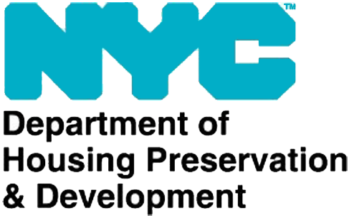
Image Credit: NYC HPD
The newly revised design guidelines will promote equity, health, and sustainability for affordable housing. On March 4, 2021, the Department of Housing Preservation and Development released newly revised design guidelines for affordable housing. The COVID-19 pandemic led the Department of Housing Preservation and Development to have stronger requirements to improve the standard of living, promote public health, and reduce the carbon footprint of New York City.
Some key portions of the new design guidelines include broadband internet access for tenants, improving cooling and ventilation, increasing energy efficiency and building supplementary guides for accessibility requirements. The new guidelines reflect the Where We Live NYC plan to build more integrated, equitable, and inclusive neighborhoods. This plan calls for city investments to combat disparities and barriers to various opportunities.
To support equity, the new guidelines require that, to a feasible extent, projects must provide high-quality internet access. As twenty-nine percent of New York City households do not have access to the internet, the guidelines hope to grant residents access to the internet to utilize online learning, teleworking, telehealth, and emergency services. The Department encourages project proposals that outline how to provide free internet service to tenants without the Department’s financing. The City also hopes to better provide accessible housing and support the needs of disabled citizens. An Accessibility Guide was developed to outline accessibility requirements for multifamily housing.
To promote health, the guidelines include requirements and guidance on ventilation and air quality to reduce risks of asthma, cardiovascular and cardio issues, and other conditions that cause an increase to the risk of COVID-19. The guidelines encourage operable windows, ceiling fans, MERV 13 filters, and flexible solutions to air filtration. Owners must now provide efficient air conditioning and window screens in every habitable room requested by the tenant. These changes all help preserve air quality and reduce airborne health risks.
Developers are also encouraged to incorporate recreational spaces that can be used as refuge in case of prolonged power outage. These areas would include backup power, heating, hot water, and refrigeration. Comfortable outdoor spaces are also encouraged by the guidelines with encouragements to equip areas with electrical outlets and landscaping to reduce heat.
To advance sustainability, all new projects must certify with the 2020 New York City Overlay of Enterprise Green Communities Criteria or LEED Gold. Projects must also benchmark energy and water consumption. New York City hopes to reduce greenhouse gas emissions by 80 percent by 2050. A Solar Where Feasible mandate was introduced which requires solar power devices o all Department of Housing Preservation and Development projects where feasible.
Overall, the Department of Housing Preservation and Development recommends a reduction of energy, water, and carbon while increasing energy efficiency, resiliency, and air quality.
Housing Preservation and Development Commissioner Louise Carroll stated, “As we continue to produce affordable housing at record pace, this Administration is equally committed to ensuring that housing contributes to creating a more equitable and sustainable city. That is why our new Design Guidelines incorporate lessons learned from COVID-19 and follow best practices to promote equity, health, and sustainability.”
Deputy Mayor for Housing and Economic Development Vicki Been stated, “HPD’s revised Design Guidelines reflect key learnings from COVID-19: Our affordable housing must promote the health and well-being of New Yorkers and help protect our planet.”
Keri Butler, Acting Executive Director, NYC Public Design Commission stated, “At this critical moment of pandemic recovery and climate-vulnerability, and working toward the goals of OneNYC, this body of work creates a framework for more equitable and resilient affordable housing development across all five boroughs. The Public Design Commission is a proud partner in this effort, building upon work from the City’s Taskforce on Racial Inclusion and Equity and our Designing New York: Quality Affordable Housing initiative. HPD’s updated design guidelines provide a comprehensive and accessible document advocating for rounded and inclusive approaches to housing infrastructure as part of healthy and sustainable communities.”
By: Patrick McNeill (Patrick is the CityLaw intern and a New York Law School student, Class of 2022.)

